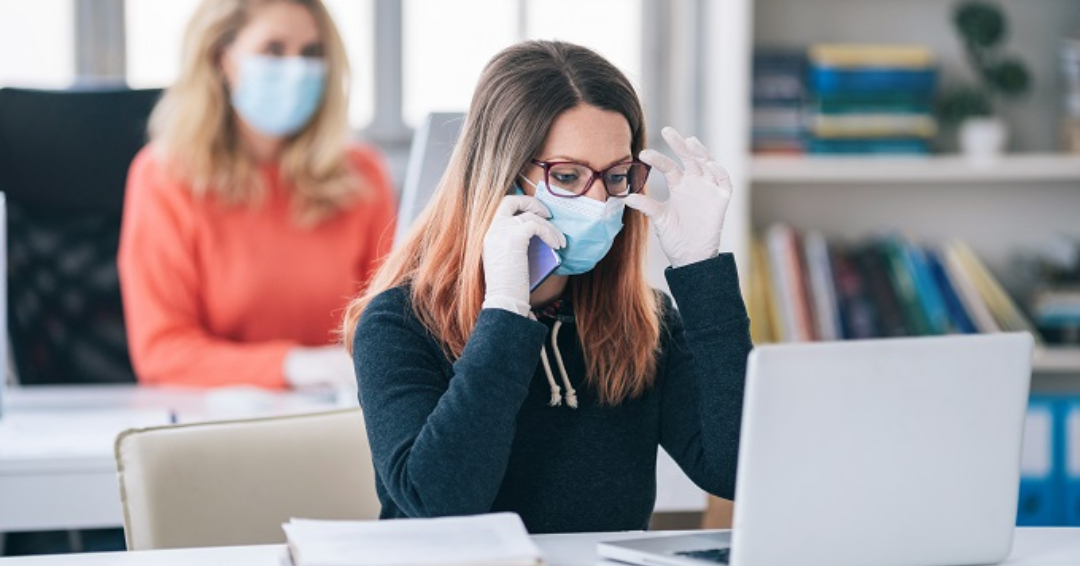Overview
Workplace are now adopting new protocols to protect their employees and avoid the spread of this COVID-19 pandemic. After working from home for a long time, are you planning to go back to the office? Most of us are waiting eagerly to go to the office and work from there. We’ve just been sitting at home and working for a long time now. There will be a routine when we go to the office, and you will also maintain a better schedule for the day. Office buildings are prime locations for the spread of diseases like COVID. As several different individuals come and go during the day and pass through familiar places, such as lobbies, security checkpoints, elevators, etc. But if we follow the basic hygiene protocols, then there is nothing to worry about.
A group of infectious, flu-like viruses is coronaviruses. They contain symptoms that can be as mild as a common cold but can be fatal in some instances. Several new challenges have been generated by the COVID-19 pandemic, especially for businesses seeking to reopen. Managers and workers can feel a sense of urgency to return their company to normal as quickly as possible. In order to ensure safe, stable working, there are new recommendations and updated procedures that should be followed.
Safety Measures
Companies can take additional safety steps to minimize coronavirus spread in the workplace other than the existing office guidelines. Know those workplace guidelines. When it comes to office work during COVID-19, the centers for disease control and prevention (CDC) has a set of information for companies. To help you decide what significant changes you will need to make in your building to ensure your workers’ health, the CDC recommends using a COVID-19 office safety guide. Offices can operate differently depending on where your office is located and following the rule of your state or city.
Minimum requirements for the workplace should include the following:
- Employees should wear a face mask in public areas.
- Spacing workstations all over the workplace.
- Increasing procedures for cleaning and disinfecting.
- Encourage staff to be aware of the cleanliness of their workspaces and their hygiene.
Focus on a different layer of protection
To avoid the spread of COVID-19, there are several preventive steps you can take. More guidelines include:
- Continuously washing your hands throughout the day.
- At least stay six feet away from other colleagues.
- Self-monitoring of any symptoms.
If all of these actions are consistently practiced, then it is hard for COVID-19 to spread.
Follow all rules:
It would be easy to go back to our old habits when we see our co-employees. But it is essential to follow all the workplace protocol. Be extra vigilant to practice good coughing and sneezing etiquette since these are two of the key ways this virus spreads. These rules can trigger minor inconveniences during the day. But at the same time, these rules keep everyone employed in the office building healthy. Always be aware of your actions while at work and how they could affect you or anyone else.
Keep an open communication line:
If you find anyone in the workplace is not following the new rules of COVID-19, share this data with your superior. We follow them to maintain safety in the workplace.
Workplace Safety Tips
Follow these coronavirus workplace safety tips to help your staff avoid the virus from spreading at work:
- Educate the employees on COVID-19 signs and symptoms. Dedicated HR services to answer employees’ questions about what to do if they get ill or are exposed to sick people.
- To avoid spreading germs in the workplace, any worker who feels sick should stay home. To accommodate staff testing positive for coronavirus, consider giving flexible or additional sick leave.
- For staff at high risk of carrying out the virus, strive to avoid physical contact. If necessary, promote remote work, or provide a more isolated work environment inside the workplace. All are recommended to wear a mask that covers their mouth and nose in the workplace.
- Discourage Handshaking. When it comes to the company, it’s almost an involuntary reaction. However, the CDC recommends strongly against handshakes during the coronavirus pandemic.
- Suspend or restrict business trips. Follow all CDC travel protocols for any employee who flies, including observing proper self-isolation and quarantine procedures.
- Support employee health by keeping tissues, hand sanitizer, soap, disinfectant wipes readily accessible to all employees.
- Have thermal cameras and door temperature sensors in offices. This is an excellent way to screen staff, customers, and visitors for COVID-19-related fever symptoms. Keep in mind that we need to use additional privacy regulations for this technology. If you want to install temperature screening thermal cameras in your office, make sure that you take extra steps to secure the personal data and identification information obtained from your thermal video surveillance systems.
- Contact tracing helps monitor, report, and show coronavirus cases near your office or in your building. Bluetooth contact tracing technology is now making it easier and more effective to monitor and record incidents and issues. As you return to work, this could be a valuable advantage in preventing transmission. Ensure that you use a device that uses end-to-end encryption and anonymous identifiers to protect data and privacy.
Social Distancing in Office
It has proved to be necessary to keep the transmission of COVID-19 under control by placing more distance between individuals. We should expect the architecture of our offices to also change with social distancing being the new standard.
- Build flexible worksites that accommodate telecommuting and remote work. Accommodate fewer people in the office, limit on-site meetings, and discourage visitors.
- Make sure that your meeting spaces and workstations are set up with the best technologies for remote collaboration.
- To add more distance between workers, reconfigure the workplace. Also, schedule for cleaning and disinfecting all high-touch surfaces in your office on a regular basis, such as door handles, chairs, phones, etc.
- Increase the duration of regular deep cleanings, focusing on occupational high-touch surfaces like monitor, keyboard, etc.
Bottom Line
The health and safety of your staff is an essential factor in your company. You should develop COVID-19 workplace safety guidelines to minimize risk and reduce the spread of germs between employees. You have to follow them in order to ensure that your workplace and employees are prepared for a post-coronavirus work environment. Make sure that you obey sufficient hygiene and disinfection protocols before reopening your office after COVID-19. Personal hygiene plays a crucial role in avoiding the spread of the virus. In addition to these, organizations have several control factors to consider. If you follow all these points, then there is no need to worry. The more you do to protect your staff, the less chaos you see and the sooner you can get back to normal.
We, at Web Mavens follow all these small tips and COVID-19 protocols. These tips help or protect you from the spread of any type of viral disease. Actually, basic hygiene and cleanliness are really needed to be performed by all of us. Good methods of hygiene will keep you and those around you clean and happy.




